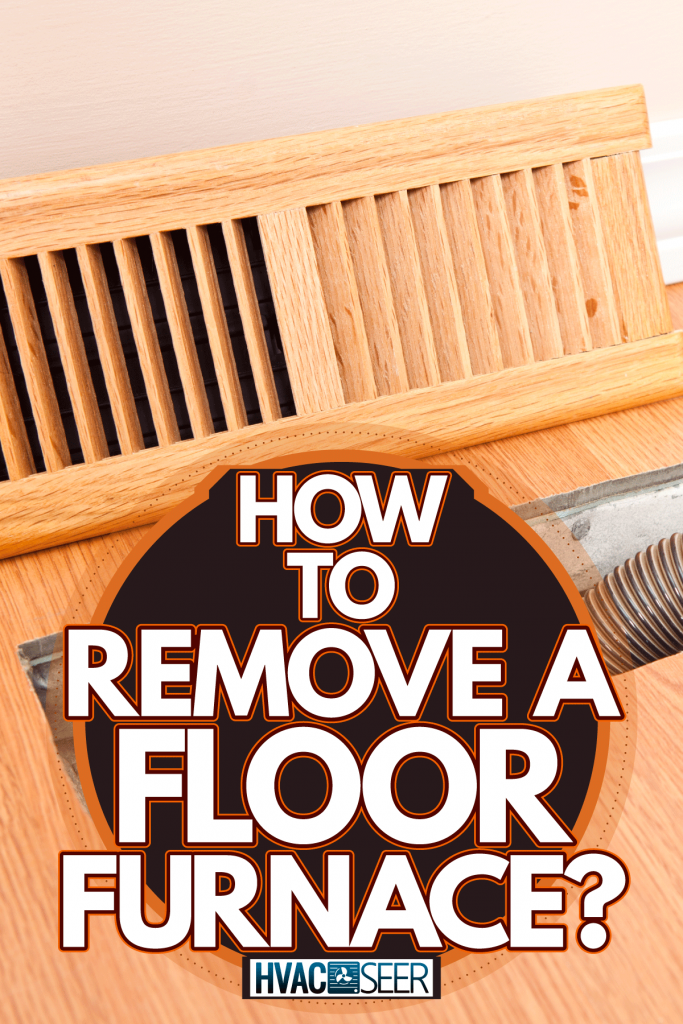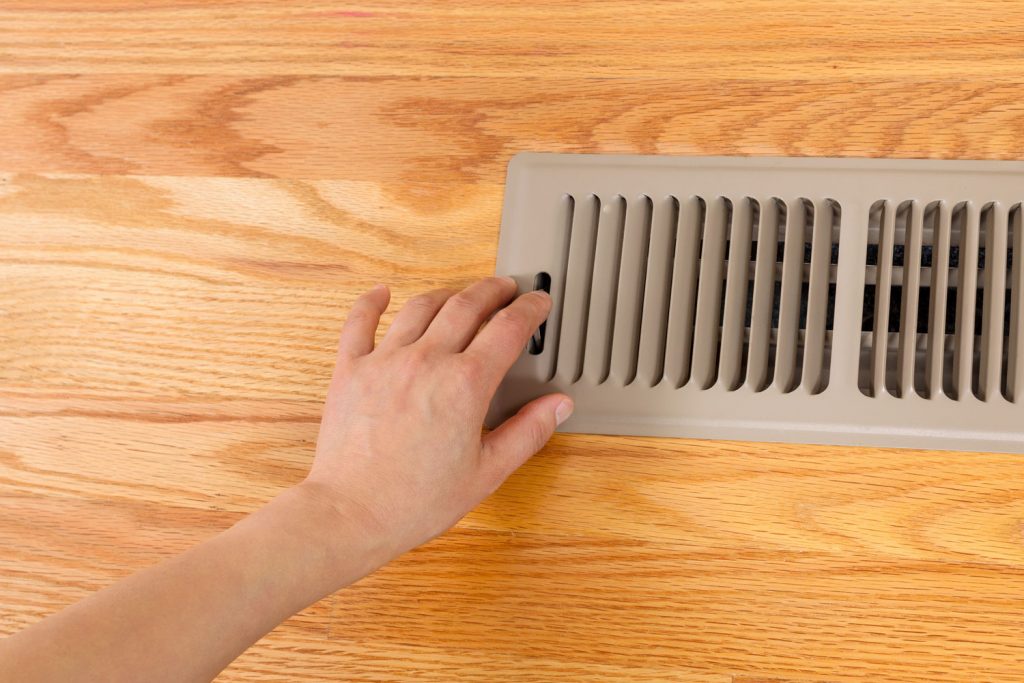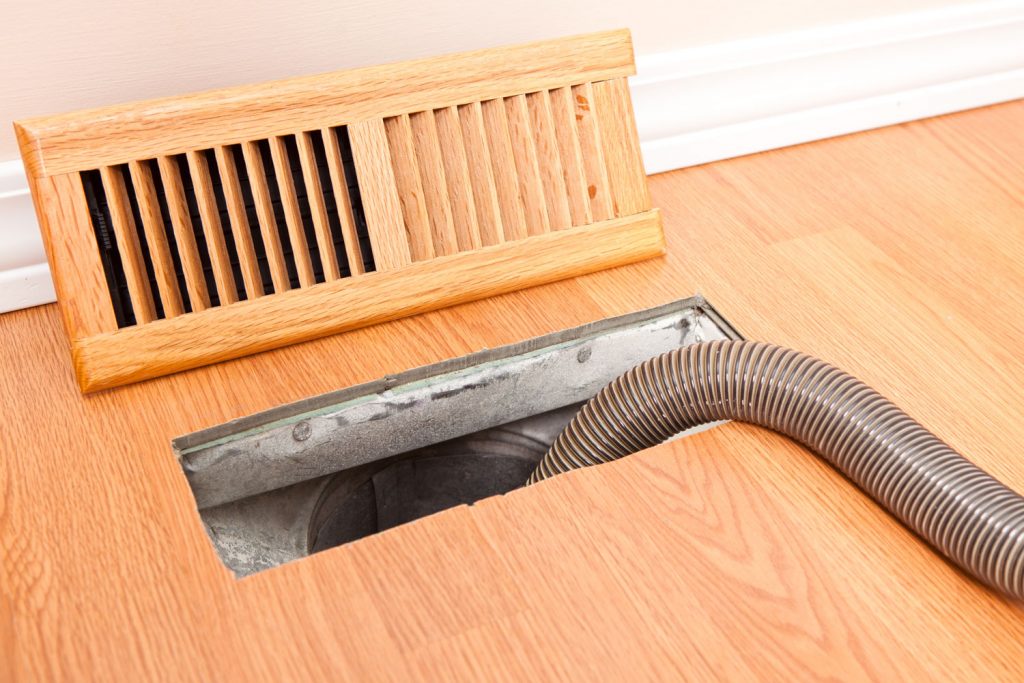Floor furnaces are typically electric or gas-powered heaters that are designed to provide heat through the floor of a home. They are usually located on the first floor of a home, with the base of the furnace being positioned in a basement or narrow crawl space. We have researched the best way to remove these heaters, and in this post, we will go over the steps.
Here are the steps to remove a floor heater:
- Turn off the electricity
- Turn off the gas line
- Remove the vent grill
- Unscrew the fasteners holding the floor furnace in place
- Lift the floor furnace out slowly and carefully and set it aside
- Remove the furnace's protective cover
Removing a floor furnace can be a physically challenging task. It can be difficult to access the base of the furnace, but removing it from its position and may require some additional help. Be sure to use the proper precautions when removing these types of furnaces. Continue reading to learn how to do it safely and efficiently.

Steps To Remove A Floor Furnace
Things you'll need:
- Screwdriver
- Flashlight
- Electric drill
- Electric saw
- Wrench

1. Turn off the electricity
If your floor furnace has an On/Off switch, be sure to turn it off first. Next, turn off the electricity supplying the furnace by heading to your basement or storage closet and flipping off the circuit breaker switch.
Allow the furnace (if it's electric) a few minutes to discharge any electricity that has been built up after it's been shut off.
2. Turn off the gas line
After turning off the furnace, turn off the gas and wait about 10 to 15 minutes for any remaining gas to dissipate (if it's gas-operated). This valve will be located in the basement or small space where the base of the furnace is located.
There may be an On/Off valve for the furnace's gas line. Be sure to turn the valve to the off position at this time. In most cases, you may need to use a monkey wrench to turn the valve, so be sure to have one handy.
3. Remove the vent grill
Next, head back up to the floor furnace and take off the top grille. If the furnace is still hot, give it about 10 to 15 minutes to cool down before attempting to remove it.
4. Unscrew the fasteners holding the floor furnace in place
Use either an electric drill or screwdriver to remove any screws holding the floor furnace in place. Start on one side of the furnace and work your way to the other side. The number of fasteners in place will vary by model and the way that the furnace is positioned.
In many cases, you'll also find wooden planks holding the furnace in place as well as sheets of metal. In which case, it is usually easier to saw these pieces away to access the furnace fully. Be sure to use your flashlight so that you can fully see the components holding the furnace in place.
You don't want to aggressively pull on the furnace unit only to find that it's still being held in place, as this can cause serious back injury. So, be sure to pull lightly at first to ensure that it's completely free.
Find details about this saw on Amazon.
5. Lift the floor furnace out slowly and carefully and set it aside
Once you are sure that you have removed any and all side fasteners, slowly lift the furnace out of its position using an assistant.
If the furnace is particularly old, you may need to rock it from side to side to loosen it up a bit. Often, these furnaces have a fairly tight fit. Lift the furnace out and set it on the floor to the side.
6. Remove the furnace's protective cover
In many cases, a thin metal sheet framing will surround the area in the floor where the furnace was placed. You can use a pry bar to remove the edge of this border or a saw to cut it away from the floor joists.
Be careful when lifting the framing out of its position, as the corners can be extremely sharp. It's best to first don a pair of workman's gloves before grabbing the framing, as the edges can be razor sharp.
Want to see how it's done? Check out this video:
How does an old floor furnace work?
Floor furnaces operate similarly to radiators. They are installed in the floor of a room and can be operated using gas or electricity, though most are gas-operated. These furnaces are essentially radiant heaters and provide heat to the spaces in which they are located.
They don't require ductwork, and they use convection to create a plume of warm air that rises to the ceiling and radiates from room to room. One downside to floor heaters is their natural ability to harbor dander, dust, and debris.
This is why many homeowners often swap these units out for more traditional upright furnaces, as they can easily become a fire hazard if they are not maintained and cleaned regularly.
The easiest way to clean these heaters is to use a hand-held vacuum and a damp cloth to wipe out any debris from inside the furnace.
Another setback of these furnaces is their potential for physical injury and furniture damage. If a heat shield is not placed on the top of the furnace, it can easily damage furniture or cause severe burns if touched.
Find this hand-held vacuum on Amazon.
Are floor furnaces gas or electric?
Floor furnaces typically operate using natural gas, propane, or electricity. Gas options are more popular with these type of units as it's typically less costly. Many of these furnaces don't require electricity to operate at all, which can be an added convenience for homeowners.
How long does a floor furnace last?
These furnaces tend to last about the same time as traditional upright furnaces, which is anywhere from 15 to 20 years. However, these furnaces require maintenance, similar to other furnaces, to prevent fire hazards and extend their life span.
Maintenance includes cleaning out the furnace's inner workings using a vacuum and damp cloth to remove any standing debris, dander, or dirt.
Are old floor furnaces safe?

Floor furnaces aren't necessarily the safest way to heat a modern home. In comparison to upright furnaces, they can create a fire hazard due to the amount of dust and debris they collect.
They can also cause personal injury if the vents for these furnaces are not covered. However, with regular maintenance and servicing, they can provide an efficient way to heat your home.
How much does it cost to remove a floor furnace?
It depends on the make and model of the furnace. However, you'll typically spend anywhere from $1,500 to $2,000 on the furnace itself. Installation can cost anywhere from $350 to over $800 depending on the layout of your home and the requirements for the furnace's placement.
How do I get rid of an old furnace?
Most licensed HVAC contractors or disposal companies will handle the disposal and removal of your old floor furnace. Frequently this will be included in the proposal or quote for a new installation or complete removal.
However, it is always best to first double-check that this is the case. If you prefer not to have a contractor remove the furnace, you can take it to a local recycler to potentially get value for the scraps.
Note that you should never place the furnace in the garbage can or dumpster outside your home, as this can be illegal and violate local regulations.
Also, be sure to prep the floor furnace for recycling by breaking it down as much as possible. Typical parts that can be recycled include the motor, copper and brass fittings or tubing, coils, metal ductwork, compressors, and circuit boards.
Wrapping Things Up
We hope this post has helped explain how a floor furnace works and can be removed and cleaned. Finally, if you're looking for an efficient way to heat your home, it's typically best to go with a traditional upright furnace.
But if you aren't able to install ductwork in your home, there are other heating options that you can choose, including floor furnaces.
Before you go, be sure to check out our other posts:


